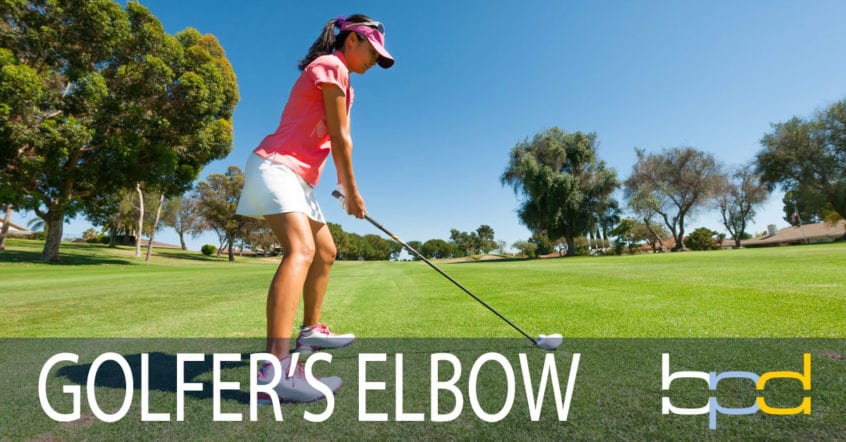
Preventing Golfer's Elbow This Spring
Spring is finally here, and that means it’s time for the Zurich Classic.
If New Orleans' premier golfing event inspires you to dust off your clubs and head out to the driving range, you may be concerned about aggravating your elbow.
In today's post, we'll be discussing how you can tune up your golf game without having to worry about one of the most common elbow conditions: golfer’s elbow.
Understanding Golfer’s Elbow
Golfer’s elbow is an injury characterized by the inflammation of the tendons that insert on medial (inner) portion of the elbow. The most common cause of golfer’s elbow is overuse of the forearm muscles. Swinging golf clubs, especially long-irons and woods, without taking a break can cause tiny tears in forearm tendons.
Pain and tenderness that is centered on the bony bump on the inside of the elbow results. Other symptoms may include stiffness, weakness, numbness and tingling in the ring and little fingers.
While golfer's elbow is a painful, serious condition, patients who follow the prevention tips listed below can look forward to a pain-free spring on the links.
Take it Easy on the Range
The range is a great place to work on your swing. But be careful not to overdo it. Hitting multiple buckets of balls in one practice session or hitting balls every day can put a great deal of stress on your elbow. In some cases, it can also be detrimental to your game. Other ways to practice include the following:
- Spend more time working on short shots, chipping, and putting
- Practice swing exercises in front of a mirror
- Adopt regular balance and core training exercises
You may find a qualified golf professional to be a great resource. A professional can help you brush-up on you golf fundamentals and share effective ways to practice without having to hit hundreds of range balls.
Ice is Your Friend
Ice is one of the best ways to reduce inflammation. Applying ice to your inner elbow after you practice and play is a great golfer’s elbow prevention tip. Usually, icing your elbow for 5-10-minutes is enough to get the job done. Intervals can be used on days when you’re on the range or course for a long time.
If you feel elbow discomfort or pain, you can supplement ice with over-the-counter anti-inflammatory medications such as Ibuprofen (Advil, Motrin IB) and Naproxen (Aleve).
Properly Diagnose Chronic Pain
Golfer's elbow is not a condition you should try to "power through." Ignoring the early signs of this painful condition can ruin your golf game.
Taking it easy on the range and icing your elbow after you practice and play are the two best ways to prevent golfer’s elbow.
If you use these prevention tips and still experience pain or other symptoms of golfer's elbow, please don’t ignore them. Contact our office to schedule an appointment with Dr. Donnelly.
Receiving an early diagnosis is the key to keeping you out on the golf course and enjoying life.
This site is not intended to and does not provide medical advice, professional diagnosis, opinion, treatment or services to you or to any other individual. Through this website and links to other websites, Brandon P. Donnelly, MD provides general information for educational purposes only. The content provided in this website and links, is not a substitute for medical care or treatment. You should not use this information in place of a consultation or the advice of your healthcare provider. Brandon P. Donnelly, MD is not liable or responsible for any advice, course of treatment, diagnosis or any other information, services or product you obtain through this site.

